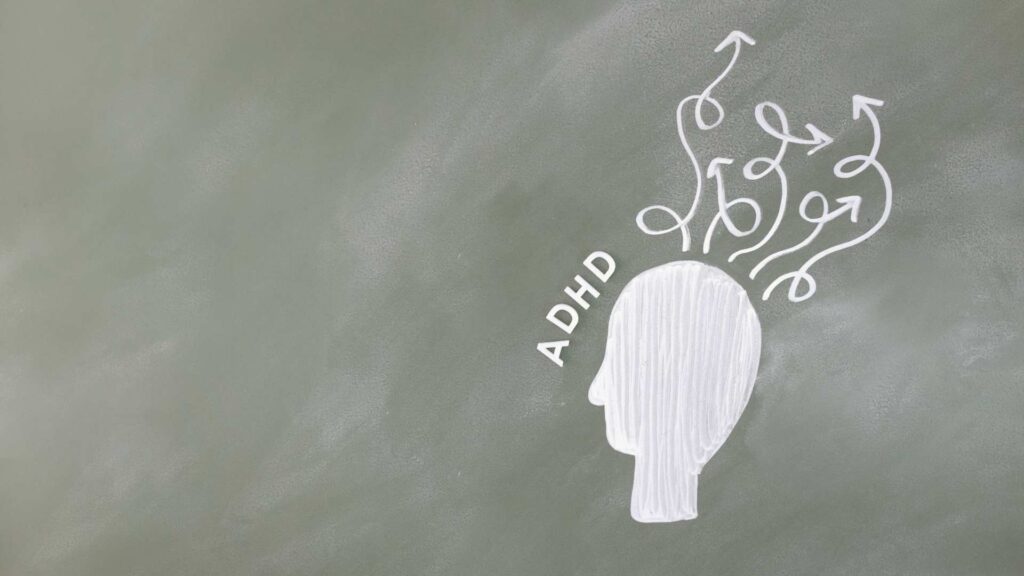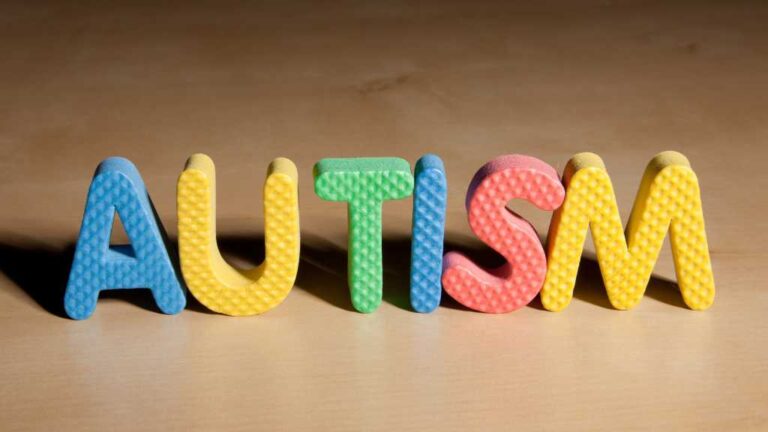Table of Contents
Which conditions can co-exist with autism?
When someone receives an autism diagnosis, the focus often falls on social-communication differences, restricted or repetitive behaviors, and sensory challenges. However, the story doesn’t end there.
Many individuals, both children and adults, with autism spectrum disorder (ASD) often experience co-occurring conditions, which include additional medical, neurodevelopmental, or emotional and mental health issues that exist alongside ASD.
But what are co-occurring conditions in autism? How do they affect individuals with a current ASD diagnosis?
Autism comorbidities affect how a person learns, behaves, communicates, sleeps, eats, and engages with their world. Without identifying and addressing them, intervention efforts may stall, or the actual needs of the individual may go partly unmet.
In this blog by ABA Centers of Georgia, we’ll explore what these ASD co-existing conditions are, why they tend to appear alongside autism, and how to spot common signs and symptoms. We will also discuss how therapy, especially Applied Behavior Analysis (ABA), can play a key role in their management.
What Are Co-Occurring Conditions in Autism?
In plain terms, co-occurring conditions in autism refer to medical, developmental, psychiatric, or neurobehavioral issues that exist in addition to the core features of autism. They are also often called comorbidities, but in many circles the preferred language now is “co-occurring conditions” to emphasize that they occur alongside rather than simply as a by-product of autism.
Certain conditions may arise during early childhood, while others may develop later in adolescence or adulthood. Because these conditions can overlap with traits of autism, and because the differences in communication and behavior associated with autism can mask or further complicate them, it is essential to diagnose and support co-occurring conditions with careful consideration and a holistic approach.
7 Co-Occurring Conditions in Autism?
According to the Autism Research Institute, conditions that can occur alongside ASD include:
Attention-Deficit/Hyperactivity Disorder (ADHD)
ADHD appears frequently in individuals with autism. Frontiers in Psychiatry suggests that somewhere around 50 %– 70 % of people on the autism spectrum meet criteria for ADHD, although figures vary by study. Children may show hyperactivity, impulsivity, difficulty sustaining attention, or restlessness, on top of social or communication challenges related to autism.
Anxiety Disorders
Anxiety is one of the most common co-occurring conditions in autism, with research indicating that between 22% and 84% of individuals with autism experience clinically significant anxiety. These manifestations may include generalized anxiety, social anxiety, specific phobias, or obsessive-compulsive behaviors.
Sleep Disorders
Many children and adults with autism struggle with sleep: difficulty falling asleep, night wakings, early waking, or poor sleep quality. According to Sleep and Psychological Disorders, up to 50-80 % of individuals on the spectrum experience one or more sleep problems. Poor sleep often amplifies behavioral, learning, and emotional issues.
Gastrointestinal (GI) Problems
Rates of gastrointestinal issues (constipation, diarrhea, reflux, abdominal pain) appear higher in autistic populations compared to neurotypical peers. Because many individuals may struggle to express discomfort verbally, GI issues sometimes present as behavioral changes, irritability, or sensory avoidance.
Epilepsy/Seizure Disorders
Seizure disorders occur at much higher rates in individuals with autism than in the general population. Some studies estimate that between 20% and 35 % of individuals with ASD may experience epilepsy at some point. Because seizures may appear subtle, they can be overlooked or misattributed to autistic behaviors.
Intellectual Disability & Learning Disorders
Many individuals with autism also have intellectual disability or learning difficulties, though the prevalence varies significantly depending on the sample and diagnostic criteria. Some individuals require specialized educational approaches, and these conditions influence the crafting of intervention plans.
Depression and Mood Disorders
Depression can emerge in children, adolescents, and especially adults with autism, often due to social isolation, communication difficulties, and sensory or cognitive overload. Some estimates place depression in autistic populations higher than in the general population.
These co-occurring conditions in autism are not exhaustive, but they represent major categories that many clinicians and caregivers will encounter. Because they can significantly affect behavior, learning, and quality of life, identifying them matters for planning adequate support.
Why Do Co-Occurring Conditions in Autism Happen?
Understanding the “why” autism comorbidities happen helps caregivers and professionals respond more effectively. While every individual is different, several converging factors explain the high rates of ASD co-existing conditions.
Shared Neurobiology and Genetic Factors
Autism involves complex brain-development patterns. Many of the co-occurring conditions (anxiety, ADHD, epilepsy, GI issues) also have neurobiological or genetic underpinnings. There is evidence that certain genetic variations or brain connectivity differences may predispose to autism and other conditions.

Overlapping Symptoms and Diagnostic Overshadowing
Some symptoms overlap between autism and other conditions, making it easy for one to mask the other. This phenomenon, called diagnostic overshadowing, occurs when a clinician attributes symptoms (e.g., anxiety, pain, sensory distress) to autism rather than identifying a separate condition.
Environmental, Developmental & Stress-Related Factors
Living with autism often means higher sensory loads, communication hurdles, and social interaction demands. These stressors can contribute to anxiety, sleep problems, GI discomfort, or emotional distress. Over time, these can become persistent co-occurring conditions.
Complexity of Developmental Trajectory
As children with autism age, they may face transitions (school, adolescence, social demands) that bring new challenges. Conditions like depression, mood disorders, or ADHD may emerge or become more evident in these phases.
Interplay Between Conditions
These co-occurring conditions in autism influence each other. For example, GI pain may lead to irritability or behavioral outbursts; sleep disturbance may worsen attention or mood; anxiety may heighten sensory sensitivities and restrict participation. This interconnectedness makes holistic recognition and treatment necessary.
Recognizing Signs and Symptoms of Co-Occurring Conditions
Identifying autism comorbidities can be tricky because behaviors may look like “just autism” rather than a separate condition. Here are indicators to monitor and determine when a more thorough screening or evaluation may be needed.
- A child with autism who suddenly becomes more anxious, avoids social or previously enjoyed activities, or develops new phobias (possible anxiety disorder)
- Increased inattention or impulsivity beyond previously observed levels (possible ADHD)
- Frequent stomachaches, constipation, or diarrhea without a clear cause (possible GI issue)
- Difficulty falling asleep or waking multiple times nightly despite stable routines (possible sleep disorder)
- Persistent sadness, withdrawal, changes in appetite, or flat affect in an adolescent or adult with autism (possible depression)
- Motor coordination problems, persistent learning delays beyond the expected autism profile (possible learning or intellectual disability)
If you observe such changes, you should consult with multidisciplinary professionals, including pediatricians, neurologists, psychologists, therapists, and educators, to evaluate the whole picture.
How ABA Therapy Supports People with Autism When Co-Occurring Conditions Are Present
ABA focuses on building skills and reducing unsafe or disruptive behaviors. It does not replace medical care, speech therapy, occupational therapy, or psychotherapy. A strong ABA program works alongside those services and addresses how co-occurring conditions show up in daily life.
What ABA does
- Teaches functional communication so the person can request help, report discomfort, or safely refuse nonpreferred tasks.
- Builds daily living skills such as dressing, toileting, handwashing, and mealtime routines.
- Uses data to find patterns and adjust supports when co-occurring conditions make behavior or learning harder.
- Coaches, caregivers, and school teams should use strategies that stay consistent across settings.
- Coordinates with physicians, psychologists, SLPs, and OTs to align goals and referrals.
At ABA Centers of Georgia: Comprehensive Autism Care
At ABA Centers of Georgia, we understand that autism rarely travels alone. We recognize that many children and adolescents face autism plus one or more co-occurring conditions. That insight guides our philosophy and how we deliver services.
We provide more than customized ABA therapy; our center also offers comprehensive diagnostic evaluation and collaborative planning that considers the complete profile of every child we serve.
With ABA Centers of Georgia, families will not face long waiting lists. From the moment you contact us, we move quickly to evaluate, identify needs, and begin interventions tailored to the unique needs of your loved one with autism.
If you’re looking for a provider that addresses autism with depth, compassion, and expertise, not just a standard “autism plan,” reach out to us today at (855) 929-5058 or contact us online. We’d love to discuss how our services can support your child’s full potential.











